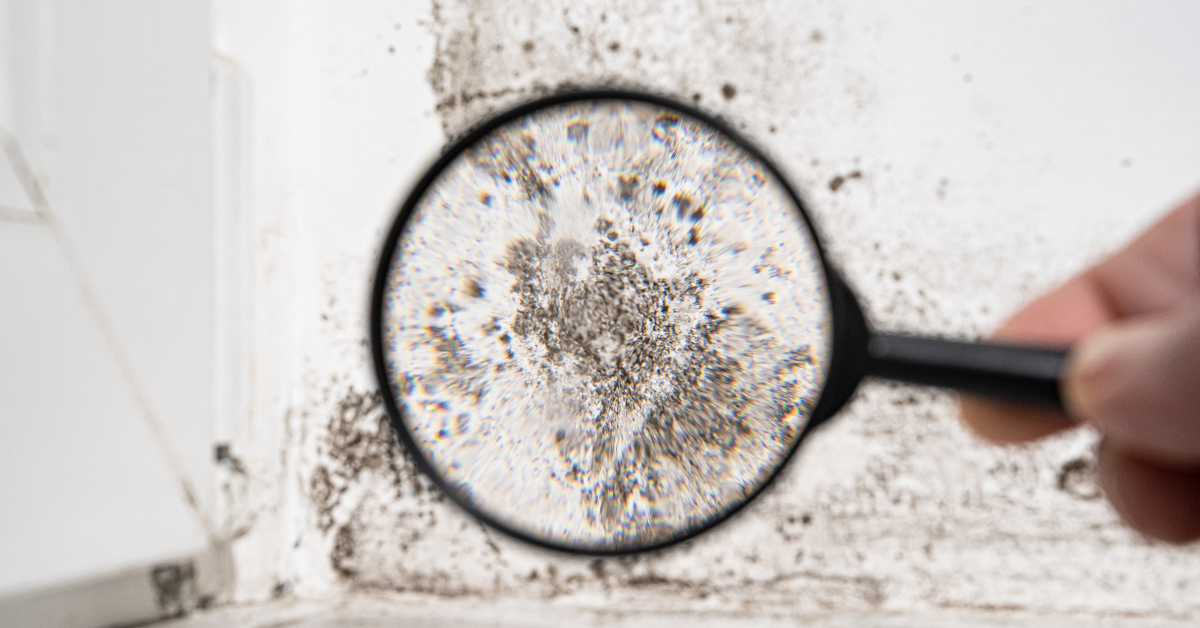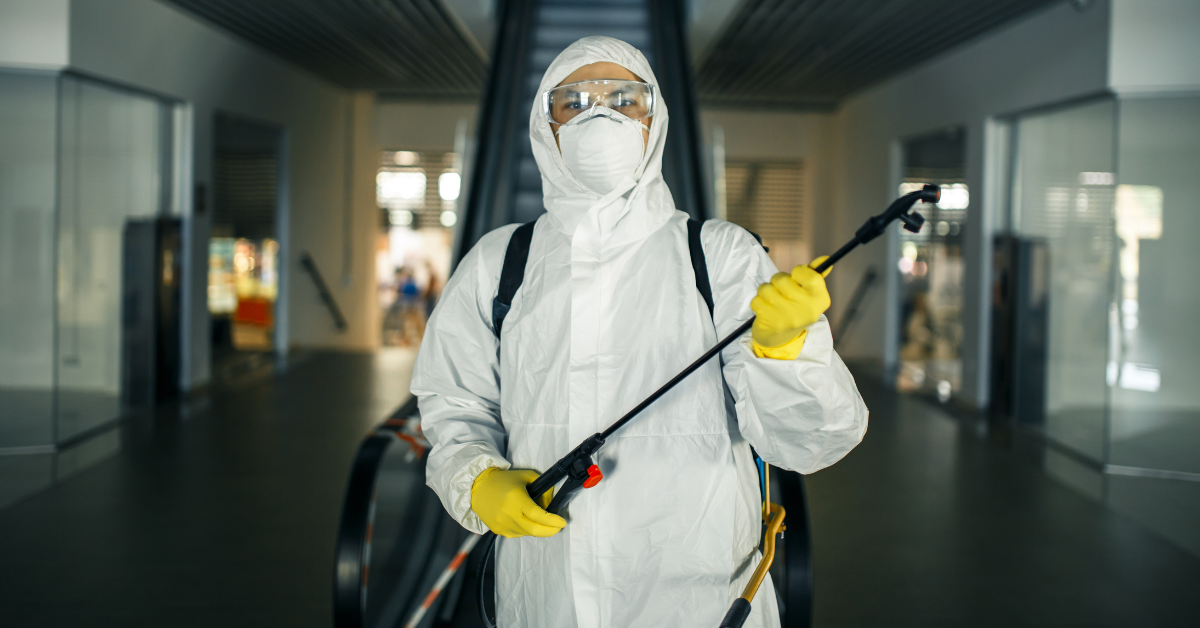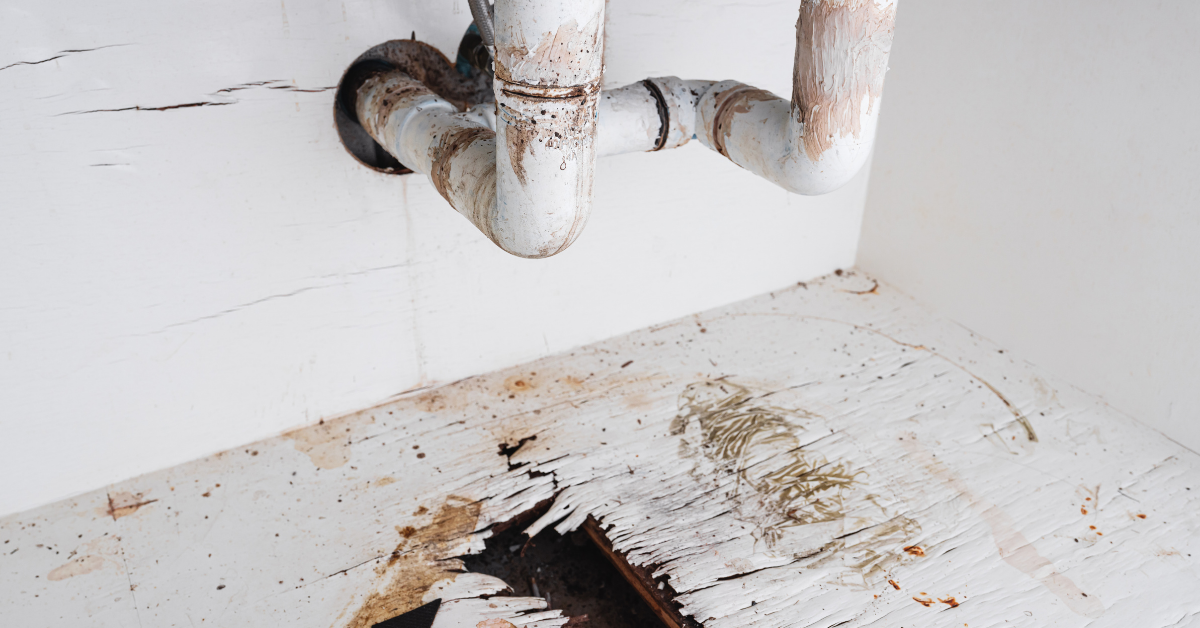At home, leaky pipes are a nuisance. They decrease water pressure, cause property damage, and can foster the perfect conditions for mold growth. As a property or facilities manager, leaky pipes aren't just an annoyance—they could become the primary source of health and safety issues.
If you suspect mold has infiltrated your commercial property through plumbing issues, you need to take swift, informed action. If you're not sure where to begin, The Lawson Group is here to help.
We're committed to supporting businesses in their effort to maintain employee health and public safety through rigorous inspections, timely solutions, and comprehensive education. Start that education with this mold quick-reference guide.
Can Plumbing Issues be the Only Cause of a Mold Problem?
Leaky pipes are one of the most common sources of moisture in a building but there are a potential host of others.
Overflowing, clogged drains. Backed up, below-grade drains that allow moisture back into the building. Condensation from cold pipes. Air conditioning ductwork that wasn’t insulated properly. Gutters and downspouts that leak onto window sills and into the building.
When it comes to mold, a leaky pipe might be the least of your worries. It’s the effects of that water intrusion or water event that can cause long-term damage that is costly to both your wallet and your workforce’s health and safety.
Mold requires moisture to survive and thrive and can be found under leaky plumbing fixtures, on damaged roofs, and in humid basements, wallboard, carpet, and any material that can hold moisture. However, leaky pipes have a unique, troublesome trait—they can cause mold just about anywhere. Unfortunately, this means mold from leaky pipes can form between walls and under floors.
Most people don’t realize that mold is common and found almost everywhere, both outdoors and indoors. Mold only becomes problematic when it can grow and it can only grow when there is enough moisture present.
Whenever we encounter a significant mold problem the first thing we look for as a cause is moisture and where it is coming from. In most cases, the mold types (species) that are found indoors are the same ones found outdoors and most of those are not harmful. When there are spores of harmful molds present and there is also moisture, that is when the harmful spores can grow and those are the ones that can cause problems for occupants.
Although mold can grow on any damp surface, it will release spores into the air as it grows. This means it can find its way into all parts of a building and can be spread via an HVAC system to all parts of a building, further contributing to a mold problem in any area where there is moisture.
 How Does a “Moisture” Problem Become a Health and Safety Issue?
How Does a “Moisture” Problem Become a Health and Safety Issue?
According to FEMA, mold colonies spread 24 to 48 hours after a leak causes standing water. That means that as soon as pipes start leaking—or moisture moves into or through a building in an uncontrolled fashion—the clock starts ticking. Because pipes often run behind walls, under floors, and above ceilings, visual signs of a leak probably mean the pipe's been leaking for at least that amount of time.
For building and facilities managers, leaky pipes pose a significant risk to a building's structural integrity, and employee health, and open employers up to crippling lawsuits. In fact, plaintiffs sued a New Hampshire-based development company for mold exposure to the tune of $60 million.
What Long- and Short-Term Risks Come With Mold in an Occupied Building?
Monetary penalties are only one effect of unchecked mold growth. At the beginning of a mold problem, employees and building residents may experience:
- Sinus and nasal congestion
- Breathing problems
- Sneezing
- Headaches
- Muscle aches
- Rashes
- Other cold- and flu-like symptoms
For people with asthma and allergies, these symptoms may be particularly awful and cause them to miss work or become chronically ill.
When these short-term effects of mold start suddenly, they may be easy to spot. However, the long-term effects of mold exposure can be puzzling. Just as mold spreads through the ducts and crawl spaces of a building, it also spreads through the body's most vital organs and can cause:
- Memory loss
- Migraines
- Bronchitis
- Brain and liver swelling, a condition called Reye's syndrome
- Joint and bone diseases
- Hepatocellular carcinoma, a cancer of the liver cells
- Kidney disorders
- Sudden infant death syndrome
These long-term effects of mold could have a wide range of causes, so if your building has had a recent leak and employees or residents start showing signs of chronic illness, it's time to investigate and solve the problem quickly.
How Do I Fix Mold Problems?
Whether your employees or residents have experienced short-term, long-term, or no symptoms at all yet, fixing an ongoing or potential mold problem is vital to employee health. How you go about doing this will depend on the nature of the leak, affected areas, and the extent of the issue.
The mold remediation or mitigation process begins with removing the source of moisture. For leaky pipes, it may mean simply patching the pipe, replacing it, or replacing broken gaskets and joints. If it's a more widespread water issue, extensive remodeling or building repair work may be required.
Next, it's time to eliminate the mold. The CDC recommends using bleach to clean up mold in homes, but commercial spaces may require licensed professionals to assess and clean up mold damage. Any remediation should be performed by licensed or trained workers, depending on what state you are located in and you should have certified mold consultants overseeing the scope of work and the actual mitigation work accompanied by appropriate mold testing where necessary to verify the success of the remediation.
If mold damage spreads to wood, carpet, or any other kind of porous surface, those materials may need to be thrown out. In any case, always allow damp materials to air dry completely.
Businesses and apartment buildings with central HVAC systems should also have those systems inspected and cleaned. While the ductwork may be metal, there's plenty of dust for mold to cling to. A contaminated HVAC system means your mold issue may not go away without extensive professional cleaning.
 How Do I Prevent Mold Problems?
How Do I Prevent Mold Problems?
Keep an eye out for leaky pipes and signs of water intrusion or water damage in a building and repair it as soon as possible. Don’t be like one of our clients who had their maintenance people replace all of the water-damaged ceiling tiles once a month so employees would not get concerned about mold. However, to discourage mold growth:
- Keep overall humidity levels low through monitoring and plenty of fresh air introduction and use dehumidifiers if needed.
- Clean up water leaks and spills and repair building components as soon as possible to inhibit water intrusion.
- Minimize the use of carpet in areas likely to get damp or humid.
- Use walk-off mats at entrance ways to minimize snow, ice, and rain from being tracked throughout the building.
- Use disinfectants to clean bathrooms and areas around plumbing fixtures.
While these day-to-day procedures may help inhibit mold growth, it's difficult to completely eradicate it on your own. The best way to minimize the risk of mold in buildings is to be vigilant about controlling moisture in your buildings.
If testing your buildings for mold, collect “wipe” or “swab” samples of visible mold growth on surfaces. If air testing, take representative samples both inside and outside of buildings and compare the species of mold. Indoor samples should include the same species as the outdoor samples and the indoor samples should be substantially lower than those outside. If you have species inside that you don’t have outside, you may be dealing with a serious potential mold problem.
Testing should be conducted by a certified mold consultant or better, someone who has a great deal of experience in dealing with mold problems.
Stay Educated About Mold in Commercial Buildings
If that liability and the potential for employee health issues make you nervous, there's one more thing you can do to prevent mold in your business: Stay educated and get a mold assessment.
At the Lawson Group of Concord, New Hampshire, we offer mold inspections and testing, and oversight of mold remediation services to keep you in compliance with health codes and help keep your employees and residents safer.
If your employee health concerns are broader than leaky pipes and mold, we also offer indoor air quality consultation and evaluation. Don't leave your employees' health and business's reputation up to guesswork. Contact The Lawson Group today for concrete answers and solutions to commercial mold issues.







